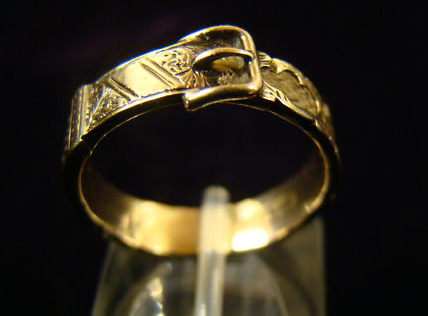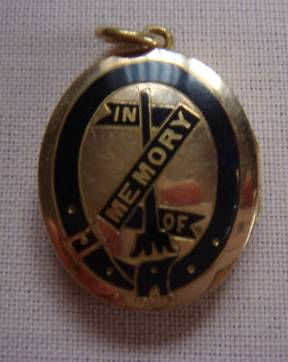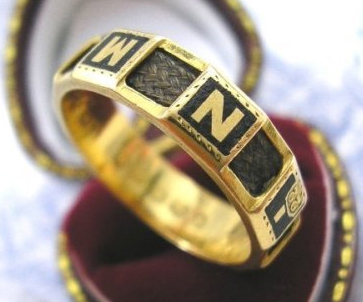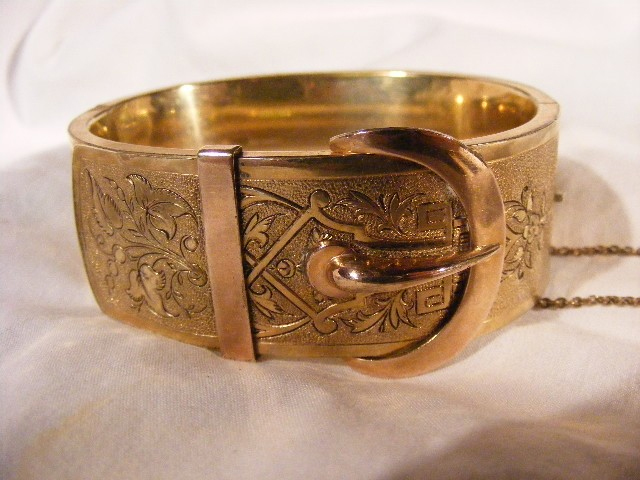Symbolism, The Belt / Buckle / Garter
Often a symbol can be so ubiquitous that it disappears from sight. It’s commonly used, often present with other symbols and it’s just accepted that it’s there.
Gainsborough Dupont (1754–1797)
The Royal Society of Musicians of Great Britain
Strength in a public figurehead provided the symbolic unity during the late 18th and early 19th centuries. Much of this strength had been eroded through the loss of the American colonies and the continuing international war effort. For the wealthy, young elite, their education and values of the Enlightenment’s right to land, liberty and equality provoked a political turn against the established order. George III supported Tory ministers over the Whigs, who held power over the House of Commons. His son, the Prince of Wales, joined other influential figures, such as Georgiana Cavendish, Duchess of Devonshire, to support the Whig party. Excesses of this generation were notable, with a high level of debt. The younger generation lived off their family inheritance and often led them to financial ruin. The Prince of Wales was in debt during 1795 to the sum of £630,000, forcing his reluctant marriage to Caroline of Brunswick. Georgiana’s debt due to gambling was £3,000, a sum which her parents paid on request of telling this to her husband. It was this contentious behaviour that was seen in the public eye and satirised in print. Support by this level of society for the French Revolution led to a reversal of favour during the attrition of the French Terror, which was seen as an event that could destabilise society in England. Challenges from Irish dissenters and Catholics, who did not have representation in Parliament, left a constant threat towards the Monarchy and politicians.
Britain’s strength was in its naval fleet and strong economics. Utilising these symbols and strengthening the Crown as a powerful symbol was essential to create national values of strength and behaviour. Curating these symbols of strength through imagery and jewellery would set the template for the future of the monarchy of the United Kingdom. Creating a series of symbols that would connect back to the Middle Ages provided strength in leadership and social behaviour through the chivalric code.
Building George III into a strong figurehead relied on utilising military uniform and the reliance of the Order of the Garter symbolism. Gainsborough Dupont’s portrait of George upholds the majestic strength of his station. The king is the representative of the nation, pointing to his Garter star; the guiding hand of the nation towards the light and prosperity. Portraits of George would often show him dressed in a military coat, even in silhouette portraits during his declining years.
George’s health declined in the early 19th century, with onset dementia, loss of hearing and sight. It is the malady of the nation when its strongest symbol begins to decline. This happened c.1810 and the Regency Act would pave the way for the Prince of Wales to become the Prince Regent, acting on behalf of the king from 1811 to George III’s death in 1820. Political party strength governed the nation during this time, but it was in the lack of a strong central figurehead to replace George that led the symbolic values of the nation to use other figures as the symbolic strength of the nation. The Prince Regent didn’t have the popular approval of his father, with his personal life under scrutiny. From national debt to his contentious relationship with his wife, the media focused on his daughter, Caroline Augusta, as being the strong, future leader of the United Kingdom. Her death in childbirth during 1817 shocked the nation, utilising mourning custom as being the strong symbolic unifier for the United Kingdom.
National symbols would enter into the common designs for mourning jewels from the early 19th century. Denoting a loved one to be seen ‘as royalty’ can be seen in the colour of the enamel used for their symbolic dedication, as well as the symbols that had been utilised by royalty designed into accessible jewels for the middle class.
Successive monarchs would popularise symbols within mourning and sentimental jewels, but it was the early 19th century that set their designs into the public eye. Princess Victoria was influenced at a young age through the jewels that were popular during this time and her being gifted these symbols was copied by the public.
During a time when the Industrial Revolution was causing massive urbanisation and a turn away from the work of experienced artisans, a reflection on how society had changed caused several art movements to try and reclaim this lost social behaviours. The Gothic Revival, led by notable artists such as Augustus Welby Northmore Pugin, lamented on the decay of society after its move from agrarian communities into cities. Social values faced a reaction against the libertarian excesses towards the religious virtues of traditional times.
The Church Building Act / Million Pound Act of 1818, provided for the expenditure of £1,000,000 on churches, emphasising Gothic as the ecclesiastical style, which culturally built into this imagery of earlier times in holy worship. Jewellery design relates strongly to these values of the Medieval, looking for stability in dominant design and nothing in jewellery can worship more highly than that of mourning. When a monarch is venerated in design, this cascades through society and the Gothic Revival style was an emerging and popular one that is reflected in the jewels featuring the designs of the Order of the Garter.
The Order of the Garter was founded in 1348 by Edward III, making it the oldest chivalric order in Europe. Limited to 24 individuals, including the Prince of Wales and the sovereign, the exclusive order represents the values of the individuals who are members. Its symbols were developed over time, beginning with the garter motif and a badge featuring St George and the Dragon. Further symbols were added, from a collar to the star and ribbon in the 17th century, though the primary element of the garter would form the mourning symbol that was appropriated by the middle and upper classes in mourning jewellery design throughout the 19th century.
Previous to the 19th century, gifting a mourning ring from a member of the Order containing the garter motif was rare, but acceptable. Defining a loved one through their personal symbolism is related to that of a keepsake featuring a family crest or personal motif. Utilising the garter with ‘HONI SOIT QUI MAL Y PENSE’ would only be for the families of the deceased, as the garter carried into common mourning jewels, but not the Order’s motto.
Colour theory in the late 18th and early 19th century was developed alongside other pseudosciences of the time. Influential thinkers, such as Johann Wolfgang von Goethe applied critical thinking to the natural world, publishing the Theory of Colours in 1810. This analysis of the perception of colours through the spectrum was used along with his contemporaries to develop a human emotional spectrum that aligned to certain colours. Colour in mourning jewels developed beyond black and white to incorporate blue. The colour blue’s association with royalty became popular during this time, for its association with trust, dignity, intelligence and authority aligned with the virtue of royalty. George III led a competition to award a royal commission for a clothier to produce a garment of such a shade of blue to be used for royal robes. A business, Scutts Bridge in Rode, Somerset, won this patronage to produce the shade of robes for Queen Charlotte and King William IV, coining the term ‘royal blue’.
In this 1782 article, an early use of the term can be seen:
NEW-INVENTED PATENT SPRING HATS, and SCOTCH BONNETS.
HENRY HARDY, at the King’s-Arms, No. 7, in the Old Bailey, respectfully acquaints the Public, that he has, with much pains, labor, and expence, invented a neat, light, and elegant covering for Ladies Hats and Scotch Bonnets… and adapted to the colours which are at present much the mode: among other colours are the royal blue, the green, pink, the Emperor’s eye, straw, &c…
Morning Herald and Daily Advertiser, 23 April 1782.
Variations of blue represented a variety of sentimental value, but mourning jewellery remained consistent in its usage. Mourning had strict parameters for what was acceptable in social behaviour, which is why having conformity in design is essential for public representations of grief.
Using blue for George III’s death is understood in its symbolic value. A mourning ring by Stephen Warrick is seen utilising the coronet and the Order’s ‘HONI SOIT QUI MAL Y PENSE’ motto, set in blue enamel. Its design has the values of the Gothic Revival, which was bringing back Baroque designs into mourning rings. Its design reveals social values of the time, from pious respect to honouring the King as the nation’s symbol of respect.
Morning Herald (London) – Wednesday 04 July 1838
Stephen Warrick’s company would also benefit from this, as he can be seen advertising for an assistant jeweller at the rate of £80.00 a year with a furnished house. Upon the death of a popular public figure, the businesses that capitalised on their death used all the symbolism within jewels and publications to tie into the national demand for symbolic jewels. George’s death, within three years of his wife and granddaughter, allowed jewellers to unify their designs to the jewels that represented his death. The Gothic Revival design elements became incredibly popular, with their bold, dominant design elements and pious symbols of respect.
Elements of the garter began to be designed within mass produced mourning jewels. The greatest change to this design would be the respectful replacement of ‘HONI SOIT QUI MAL Y PENSE’ with ‘IN MEMORY OF’, a statement that would be the most commonly used in mourning jewels throughout the 19th century. National respect is designed into these jewels, which are personal sentiments of love. Visually, this ties British identity into the very act of honouring a loved one’s passing. The popularity of the garter motif only grew throughout the 19th century, as it became a ubiquitous border design for many mourning jewels, which housed symbolic elements of other designs.
The garter had grown into its own symbolic meaning of the eternal loop, always interlocked, in the same way the ouroboros became associated with eternity. A serpent consuming its tail is more visceral a design than the buckle, which declined in popularity post c.1860s.
A design such as this c.1870s locket featuring the most stylised combination of the garter and the ‘IN MEMORY OF’ elements could be purchased from catalogues internationally. Using these symbols with an upside-down torch, harp, cross or forget-me-nots made the symbol of the garter one of the most subliminal, widely used symbols for national respect and mourning.
Mourning jewellery connects the United Kingdom together in mourning symbols and colours. A public who was expected to behave in certain patterns for the stages of mourning that were enforced for general mourning of a public figure, or for a loved one at home, all were wearing symbols of nationalistic pride.
As an object of use, the belt dates to the prehistoric, basically as necessity dictates the use of a way to either hold up any clothing below the waist or fasten objects to the waistline for ease of access. This could be as practical as holding up a pair of pants or as precious as holding a ceremonial/ ecclesiastical object for decoration. The device is a perfect marriage of form and function. And to accompany this, as long as humans have been mining metals, at least recorded to the Iron Age, the buckle has accompanied the belt to hold fast to the waist.
From a high level perspective, the belt and buckle split the body in two, creating a clear delineation through the waist from the northern and southern halves of the body, but also holding the body together through this middle separation through its interconnecting and tight nature. As we move on, you’ll see how this relates to its context with other symbols.
Essentially, the buckle/belt motif relates back to this unbreakable strength of upholding loyalty and in turn, memory forever. Its eternal loop is combined by its strength with which it holds up the virtue that it contains. When related back to the family as a unit, a loved one who is lost would ordinarily break down the family and cause untold grief and sadness, however, the presentation of this symbol from a loved one as representation of the person who has passed on only intensifies the eternal strength and love for the person, as well as the strength of the family to stay together. This symbol also relates to love tokens, for this eternal loving strength can obviously be applied to the living; it is a symbol that is all encompassing. So, while many rings and bracelets took on the shape of the buckle in the 19th century, they don’t necessarily denote mourning or death.
There is where we have to look at the symbol when it is combined with other symbols to discover its nature in relation to the piece. Look at this particular piece with the upside-down torch. Note how the buckle is not only a decorative border, but it is in fact wrapping itself around the life cut short and strengthening this with an eternal loop that forever holds tight. This is important, as the love and gravity of the symbol are enhanced by the buckle.
When the buckle is worn as a complete motif, as it becomes the ring in this case, think of how it is worn. This buckle is tight around the finger, the sentiment of love becomes part of the body, in effect, creating that bond of eternal love around the very person. The person becomes the symbol.
Late 19th century rings are wonderful showcases for the depiction of the buckle – be it mourning or sentimental token.
Different constructions involving hinged buckles that open to reveal hair or enclosed hair with letters of a person’s name or dedication sentiment would be placed in panels over the hair itself, all creating the belt/buckle motif.
It should be noted that you can find the belt/buckle motif on rings as secondary symbols in enamel, not just making the band itself. As it was a multi-purpose symbol, you can also find them in silver and other materials quite commonly from the latter 19th century into the 20th. For many sentimental jewels, the garter as a symbol does infringe upon the buckle symbol from time to time, in those particular cases, it becomes a symbol of chastity and virtue.
Moving back into the idea of the belt/buckle in context with other symbols, this particular piece shows the buckle with the ‘In Memory Of’ sentiment. This once again reflects the eternal strength of memory and in this case, the dedication itself becomes the symbol, which has become enhanced by the belt/buckle. This is quite common from the mid 19th century on, the rise of the belt/buckle had become part of the cultural lexicon.
In the case of this bracelet, you can see how its decoration once again turns the wearer into the symbol of strong affection and love. Wrapped around the wrist, it promotes a strong connection of the wearer to the person who commissioned it.
As with all these symbols, loyalty and fidelity relates to the tightness of the eternal love motif that the wearer promotes through their keepsake.















